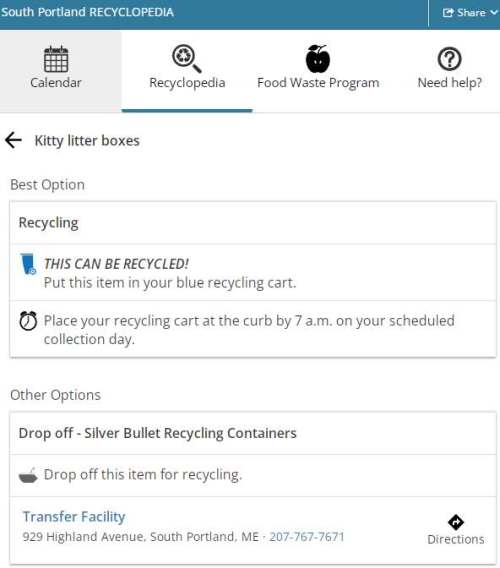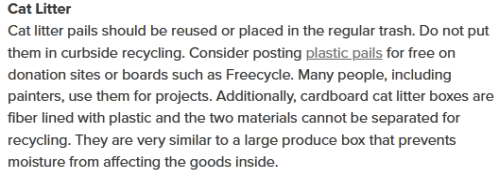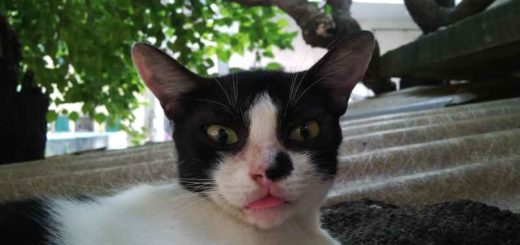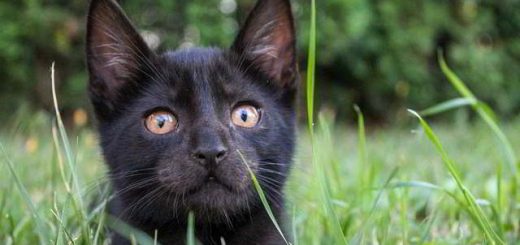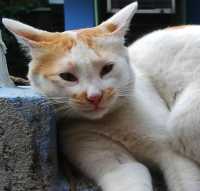Cat Litter FAQ
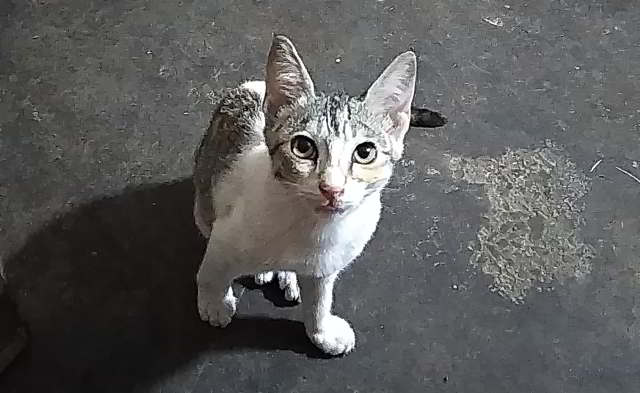
We’ve noticed several important queries related to cat litter that individually do not merit entire articles. So we decided to compile them into one FAQ post. We’ll keep updating this write-up as we discover more queries.
If you have a query of your own that is not addressed in this list, please mention it in a comment and we’ll try our best to find an answer and add it in here.
The write-up contains links to different resources on this site and elsewhere. And there are some affiliate links; If you click them and buy something, we get a small commission at no extra cost to you. We only recommend brands that we believe are safe for both cats and humans. Some of them offer a commission, some do not.
We do not recommend silica crystal or bentonite clay (or clumping clay) litter even though these have a huge market and our site ranks for keywords related to both.
Table of Content
Are Cat Litter Boxes Recyclable?
Yes, and no. Some places, like South Portland, allow recycling of cat litter boxes:
Cuyahoga County, on the other hand, has specific instructions about not putting cat litter pails in curbside recycling, reason why cardboard litter boxes cannot be recycled, but nothing about cat litter boxes in particular:
It is best to check your local laws to understand what is permitted to be recycled. And do this even if your cat litter box is certified recyclable. Because that only means that the material it is made out of is recyclable. What it does not guarantee is that your local authorities will allow recycling of a used poop n’ pee box!
Please do not confuse ‘disposable’ and ‘made from recycled matter’ or even ‘recycled cardboard’ with recyclable. Used cat litter boxes made of cardboard are not likely to be most people’s first choice to recycle into, say, milk cartons. And you can’t even wash them to the point of sterilization because that’d make them fall apart.
That being said, buying disposable cat litter boxes made from recycled cardboard or paper is better than adding plastic trays and boxes to the landfill.
Unless, that is, you find some clever use for the plastic boxes in your garden (after sterilizing them, of course).
Can Cat Litter Cause Sinus Infection?
According to Dr. Michael Koriwchak on HealthTap, this is ordinarily unlikely. However, if you are allergic to cats or dust and your cat litter has enough dust to cause an allergic reaction in you then a host of symptoms may emerge, including sinus inflammation.
According to the Center for Disease Control (CDC), the following are the usual causes for a sinus infection:
- you are prone to seasonal allergies and sensitive to smoking and being exposed to smoke,
- you have problems (like nasal polyps) within your sinuses or the lining of the nose,
- your immune system has been compromised/weakened somehow and,
- you were previously experiencing a cold.
If you have a cat and your cat uses litter, and if you’ve also been having sinus problems even though the causes/conditions listed above do not apply to your case, it would make sense to find out (from your doctor) if you are allergic to cat or cat litter.
As a side note, dust from cat litter and ammonia from used litter can cause a host of problems (including asthma) in certain individuals. But with the proper precautions, you can still keep your fur baby. Just get to the doctor early.
Can Cat Litter Hurt Dogs?
Used litter can definitely cause problems because of obvious reasons if your dogs ingest it. There could be spread of diseases or parasites if those are in the cat’s excrements.
Other than that, all cat litter, not just the ones made from clumping clay, is created to serve as an absorbent medium. Even if the litter is fresh, it is best to keep it from getting into your dog’s stomach. At the very least, this could lead to digestive upset and constipation.
Can Cat Litter Affect Pregnancy?
YES! There’s a parasite called toxoplasma gondii that is sometimes found in cat poop. Other than being harmful for marine life (which is why some states have a law against flushing used litter), they could seriously affect a pregnant human. The parasite, if it invades your body during pregnancy, might go through the placenta to the fetus and cause severe complications.
The risk percentage varies with the various stages of pregnancy. However, that is a matter best left to researchers. As ordinary people, we will want to avoid cleaning the litter box if we are in any stage of pregnancy.
The good news is, there is no evidence of human to human transmission of T Gondii. This means, even if you are pregnant, there’s no reason to get rid of your cat. Just have someone else empty the litter box or tray for you. And then have them wash their hands well.
If you are still feeling a little unsettled, please read this case study that shows diagnosis and treatment of a 26 year old woman when she was pregnant. Hint: this is a story with a happy ending!
Can Cat Litter Be Used as Fertilizer?
Yes, you can compost used litter and turn it into fertilizer. However, because of the T Gondii menace discussed above as well as the fact that cat poop may well contain other germs and parasites, it is best to compost used cat litter through the hot composting method. That should kill all pathogens.
Also, leave it to decompose for at least 18 months just to be on the safe side. We don’t know why 18 is the magic number but while doing our research that number did come up a few times.
You can also use fresh cat litter made from walnut shells, corn, wood and other similar material just as you would use coco peat – by mixing it with your garden soil (the ratio will depend upon what you are planting).
If you are really interested in composting used cat litter, please read this section in our homepage. You will also find additional resources mentioned there.
Table of Content
What Cat Litter Doesn’t Stick to Paws?
Forget cat litter – what substance doesn’t stick to paws – or your fingers? Something that is not grainy (like sand) or too lightweight and small (like dust) or sticky (obviously).
Logically, therefore, any cat litter that comes in the form of pellets or large grains that cannot lodge themselves inside your cat’s paws is a good enough example.
Recommendation: stick to any cat litter made from paper pellets. Pine shavings are also good in this respect but smaller pieces do stand a chance of getting inside the soft pads of the paws – or even getting stuck to the surface of the body if your cat has especially rich fur.
What Cat Litter Tracks the Least?
This query is related to the earlier one and the answer is the same: avoid litter that is both lightweight and dusty (because paper pellets are lightweight, too, and do not track), and one that is distinctly grainy.
However, let’s split hairs and differentiate between litter that sticks to the paws and litter that tracks – just to get a few more options.
Recommendation: cat litter made from paper pellets, grass seeds, corn and cassava granules and pine shavings are usually among the least tracking.
What Cat Litter to Use After Spaying?
You will want to keep all foreign particles away from your cat after they’ve been spayed so as to keep the wound clean.
And so, it is best to use cat litter that doesn’t stick to the cat.
Recommendation: Cat litter in the form of paper pellets – no dust, doesn’t stick to anything.
What Cat Litter Has the Least Dust?
Based on user reviews from all over the Internet including comments on this site, the least dusty cat litter types are those that are pelleted or granular and made from paper, pine shavings, wood, grass seeds, corn-cassava blend, zeolite, and walnut shells.
Recommendations: Please refer to this chart and read the detailed descriptions.
What Cat Litter Is Best for Smell?
People making this query could either be looking for a cat litter that smells good, or they could be looking for a litter that is good at masking odor.
If you’re looking for a litter that smells good, you could choose a scented cat litter or one made from pine with its characteristic fresh smell.
If you’re looking for cat litter that is great at odor control, here are our recommendations:
- Okocat wood litter, reportedly with upto seven days of odor control),
- Zeolite litter and additive,
- Naturally Fresh (walnut shells),
- Soft Paw (fuller’s earth),
- Pretty Litter (amorphous silica gel)
- Feline Fresh (recycled southern yellow pine)
What Cat Litter Is Best for Kittens?
We have rescued a number of abandoned kittens, fostered new-born ones and watched heavily pregnant (and abandoned) cats give birth since 2001. There were several options available for the little ones and invariably, they chose soft garden soil over sand, sawdust, paper (not pellets, just old newspaper), and heaps of dried leaves.
There are cat litters made specifically for kittens, but we do not yet know much on this subject to recommend any specific brand.
Instead, we’ll advise against using silica crystals and clumping clay litter. These two varieties can both be lethal for cats, and especially for kittens. If you’re interested in knowing more about what cat litter you should avoid, please read our posts on sodium bentonite litter and silica cat litter.
What Cat Litter Is Flushable?
In a nutshell, cat poop may contain a parasite lethal for marine life and with the capacity to cause abortion and consequent infertility in human females. It is not advisable to flush cat litter unless you have a septic tank at home the content of which will never reach the ocean or an open water body. There are laws against flushing of cat litter (in California, for example).
Also, flushing does not invariably mean the litter gets safely swept out of the pipes. On the contrary, hastily flushed litter could cause sever blockage and cost you a pretty penny.
Having said that, we did find a few brands that users have found useful.
This is a subject that required an extensive write-up. Please read our article on litter that you can flush, as well as the post that answers frequently asked questions about flushable cat litter.
What Cat Litter Is Safe for Rabbits?
Rabbits nibble a lot, so do not give them anything that you’d rather not have them eat. Which rules out cat litter made from clumping clay and silica crystals. We’ll even include silica gel which is otherwise harmless, but certainly not edible, and like we all know, rabbits eat a lot. It is best to avoid wood shavings as well, and phenols naturally occurring in pine and cedar are in any case bad for rabbits.
Recommendation: Our personal experience with rabbit litter is almost nil. But from what we have understood from the product description and the user reviews, Eco Straw litter for small animals might be a good choice for rabbits. When ingested, it is expected to actually help their digestive system. There are no chemical additives and the litter is made completely out of wheat straw.
What Cat Litter Should I Avoid?
We have always spoken against cat litter made from sodium bentonite – you may have seen such litter advertised as ‘clumping clay litter’. Apart from the fact that surface mining for sodium bentonite leaves the top soil totally removed and the earth barren, the clumping property can prove fatal for cat and especially for kittens.
There have been too many stories from cat owners about how their cat fell seriously ill (and sometimes didn’t make it) after ingesting clumping litter. This is not surprising since sodium bentonite is known to clump ‘like cement’ and what would you expect would happen to a cat’s digestive tract when that kind of litter get in there?
Read more about the environmental impact of mining sodium bentonite and the why you should avoid clumping clay litter.
We’ve had other users vehemently deny that there’s anything wrong with clumping clay litter but better safe than sorry is what we always say when it comes to our fur babies.
We’ve also advocated against silica crystal cat litter – there are simply too many studies (as well as stories from users) about how bad it is for the lungs. This is respirable silica we are talking about, not to be confused with amorphous silica which is popularly called silica gel. Silica gel is not known to be particularly harmful. Its absorbent and odor trapping properties are appreciated by most cat owners and an additional advantage is that it is lightweight and budget friendly.
Read more about silica cat litter.
What Cat Litter Is Best for the Environment?
Anything that is farmed / manufactured sustainably and biodegrades adequately without releasing any noxious by-products from production to end use is the best for the environment. Cat litter is no exception.
This means, we are looking at sustainably produced cat litter with or without organic certification. You could be misled if you considered cat litter made from ‘natural’ resources to be environment friendly. Bentonite clay is as natural as it gets – it is clay! But the manufacturing process destroys the top soil and the litter itself has been known to kill cats.
When you are looking for cat litter that makes the environment better or, at least, does cause harm to the ecology in any manner, you will want to browse through the manufacturer’s website to understand how forthright they are about their green efforts. Businesses that actually pursue sustainable methods of manufacture usually do not shy away from displaying proper certification or other related documentation and data.
We are wary of sites that make claims without validating anything.
Read more on how to understand if a manufacturer is environment friendly.
What Cat Litter Do Vets Recommend?
Our take on this may sound irreverent especially if you have a vet you trust. We have seen heard about and interacted with too many cat parents to ever trust clumping clay cat litter. And yet, an alarming number of vets recommend precisely that.
This is going to sound personal – because it is. Those of us who love cats gather a different experience and acquire a different sensibility than people who treat cats professionally. We are not saying they are callous or inefficient, and their degrees certainly forbid us from commenting on their knowledge. Still, given our experience dealing with strays (as well as pets) since 2001 and our interaction with various veterinary doctors for just as long, we are inclined to trust an experienced caregiver more than we trust the average vet.
There are always exceptions to everything but this is what our experience has taught us.
If you have found clumping clay useful and if your cats love the litter, that’s great news. By all means, don’t mend what’s not broken. But please do not go for clumping clay litter just because a vet recommended it. Read this post (as well as the comments made by our readers) to understand why we are wary of clumping clay litter.
There are many options that are safe for both you and your cat – please take a look at this chart and take your pick.

